Related Research Articles

Frank Philip Stella is an American painter, sculptor and printmaker, noted for his work in the areas of minimalism and post-painterly abstraction. Stella lives and works in New York City.
John Walker is an English painter and printmaker. He has been called "one of the standout abstract painters of the last 50 years."
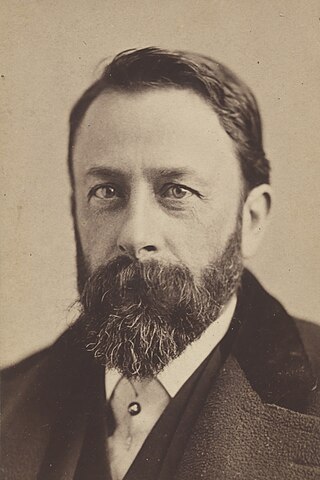
Albert Bierstadt was a German American painter best known for his lavish, sweeping landscapes of the American West. He joined several journeys of the Westward Expansion to paint the scenes. He was not the first artist to record the sites, but he was the foremost painter of them for the remainder of the 19th century.

Ben Shahn was an American artist. He is best known for his works of social realism, his left-wing political views, and his series of lectures published as The Shape of Content.

William Morris Hunt was an American painter.
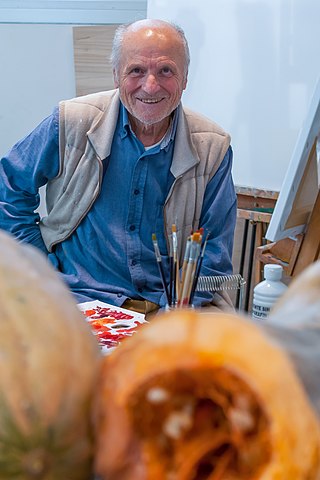
Antonio López García is a Spanish painter and sculptor, known for his realistic style. He has been praised by leading art critics, such as Robert Hughes, who considered him "the greatest realist artist alive" in 1986. His style sometimes is deemed hyperrealistic. His painting was the subject of the film El Sol del Membrillo, by Victor Erice, in 1992.
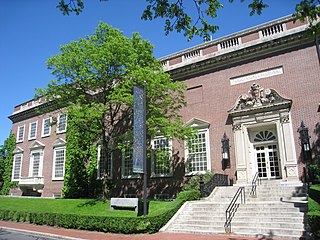
The Harvard Art Museums are part of Harvard University and comprise three museums: the Fogg Museum, the Busch-Reisinger Museum, and the Arthur M. Sackler Museum, and four research centers: the Archaeological Exploration of Sardis, the Center for the Technical Study of Modern Art, the Harvard Art Museums Archives, and the Straus Center for Conservation and Technical Studies. The three museums that constitute the Harvard Art Museums were initially integrated into a single institution under the name Harvard University Art Museums in 1983. The word "University" was dropped from the institutional name in 2008.
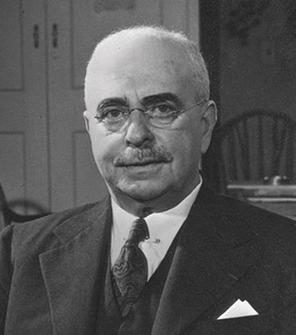
Paul Joseph Sachs was an American investor, businessman and museum director. Sachs served as associate director of the Fogg Art Museum and as a partner in the financial firm Goldman Sachs. He is recognized for having developed one of the earliest museum studies courses in the United States.
Karl Zerbe was a German-born American painter and educator.
David Hilliard is an American photographer. A fine arts photographer who works mainly with panoramic photographs, he draws inspiration from his personal life and those around him for his subject matter. Many of the scenes are staged, evoking a performative quality, a middle ground between fact and fiction.
Arthur Everett "Chick" Austin Jr. was the director of the Wadsworth Atheneum from 1927 through 1944. Austin persisted in the introduction of then-modern theater and modern design and especially contemporaneous art. Salvador Dalí, Alexander Calder, and Gertrude Stein benefited from his advocacy.
Chick Austin helped alter the way Americans looked at and thought about modern art. For starters, he organized the first Picasso retrospective in the United States, put on the first show of Surrealist art and, with Kirstein, helped engineer the immigration of choreographer George Balanchine and sow the seeds for Balanchine's School of American Ballet.

George Leslie Stout was an American art conservation specialist and museum director who founded the first laboratory in the United States to study art conservation, as well as the first journal on the subject of art conservation. During World War II, he was a member of the U.S. Army unit devoted to recovering art, the Monuments, Fine Arts, and Archives section (MFAA), a.k.a. "The Monuments Men."

Theresa Pollak was an American artist and art educator born in Richmond, Virginia. She was a nationally known painter, and she is largely credited with the founding of Virginia Commonwealth University's School of the Arts. She was a teacher at VCU's School of the Arts between 1928 and 1969. Her art has been exhibited in the Whitney Museum of American Art in New York, the Boston Museum of Fine Art, and the Corcoran Gallery in Washington, D.C. She died at the age of 103 on September 18, 2002 and was given a memorial exhibition at Anderson Gallery of Virginia Commonwealth University.
Boston Expressionism is an arts movement marked by emotional directness, dark humor, social and spiritual themes, and a tendency toward figuration strong enough that Boston Figurative Expressionism is sometimes used as an alternate term to distinguish it from abstract expressionism, with which it overlapped.
Edward Waldo Forbes (1873-1969) was an American art historian. He was the Director of the Fogg Art Museum at Harvard University from 1909 to 1944.
Jon Imber (1950–2014) was an American artist.
Dante Raphael Giglio, better known as Giglio Dante, was an Italian-born American painter.
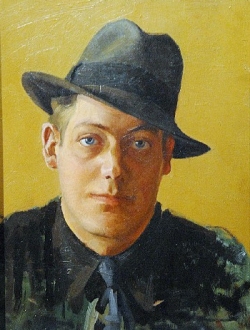
Ture Bengtz was a Finnish-American artist associated with the Boston Expressionist School, an influential teacher at the School of the Museum of Fine Arts in Boston, and director of the Art Complex Museum in Duxbury, Massachusetts. He also had a television show, "Bengtz on Drawing," on Boston's PBS station in the late 1950s.
Lawrence Kupferman (1909–1982) was an American painter associated with the Boston Expressionist school in the early 1940s, and later, with Abstract Expressionism. He chaired the Painting Department at the Massachusetts College of Art, where he was known for introducing innovative practices and techniques.
Robert Bauer is an American painter who creates pictures of people, landscapes, backyards, and gardens. Bauer's paintings of backyards and gardens gained him much recognition and his art has been shown in multiple exhibitions.
References
- ↑ Brown, Robert. "Oral history interview with Carl E. Pickhardt, 1974 Dec. 4-1975 Jan. 16". Archives of American Art.
- 1 2 3 4 "Carl E. Pickhardt, Jr". Questroyal Fine Art, LLC. Retrieved December 2, 2017.
- ↑ "Carl Pickhardt". Museum of Modern Art. Retrieved December 2, 2017.
- ↑ "Carl Emile Pickhardt, Jr". Museum of Fine Arts, Boston. Archived from the original on 2017-12-03. Retrieved 2017-12-02.
- ↑ "Carl E. Pickhardt papers, 1929-1998". Archives of American Art. Retrieved December 2, 2017.
Sotheby's San Francisco, Carl Pickhardt: Free Form, an exhibition featuring works by American abstract artist Carl Pickhardt on view at One Sansome Street, Suite 750 from August 1 through September 28, 2018.